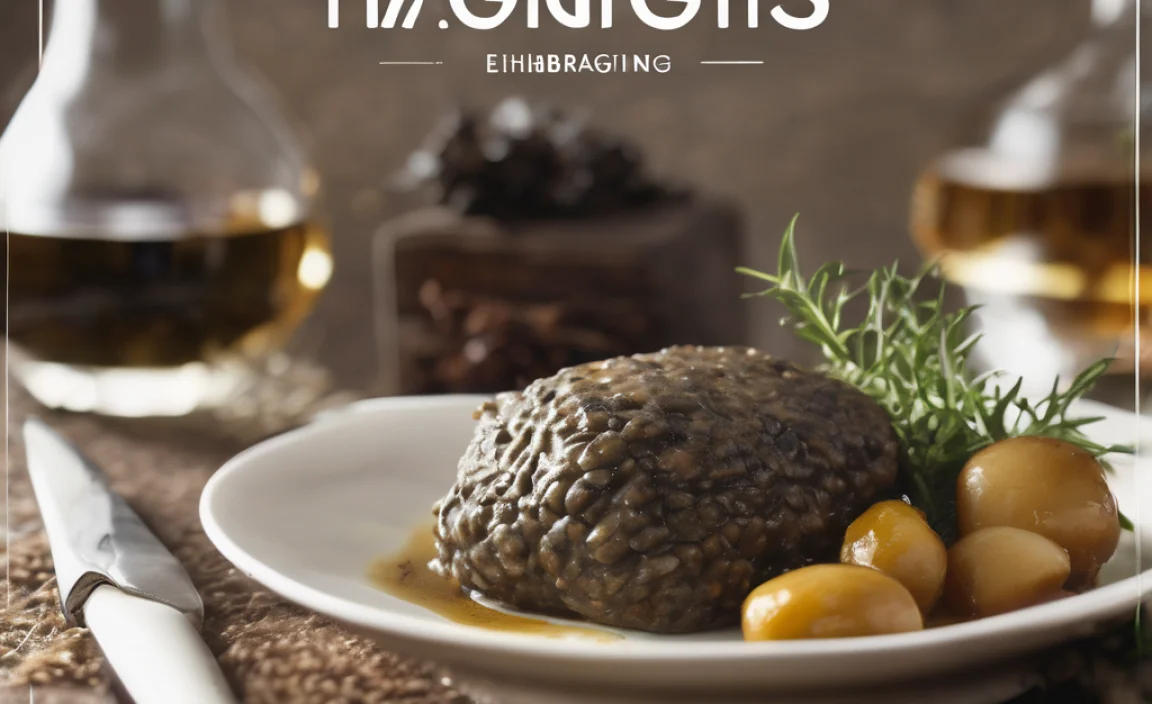Herring tasting in Amsterdam is a delicious journey into Dutch culinary tradition. This essential guide helps beginners navigate the best spots, understand the etiquette, and savor every bite of this iconic raw herring, often served with simple accompaniments like onions and pickles – no fancy steps needed to enjoy this classic treat!
Amsterdam is famous for many things: canals, bicycles, and amazing museums. But for food lovers, there’s a truly unique experience waiting: tasting herring! If you’ve never tried it, or even if you have, this guide is for you. We’ll break down everything you need to know to enjoy this Dutch delicacy like a local. It’s easier than you think, and incredibly rewarding. Get ready to dive into a tasty tradition!
<h2>What Exactly is Dutch Herring?</h2>
<p>You might be wondering, “Raw fish? Really?” Yes! Dutch herring, often called “Hollandse Nieuwe” (New Dutch) or “maatjesharing,” is a special kind of young, fatty herring that’s been preserved using a traditional salting method. This process, called “ Hollandse Nieuwe” when harvested in late spring/early summer, cures the fish, giving it a distinctively mild, rich, and slightly sweet flavor that’s surprisingly delicious. It’s not intensely fishy, but rather buttery and smooth. The key is its freshness and the way it’s prepared. It’s a cornerstone of Dutch culture, enjoyed for centuries.</p>
<h2>Why Try Herring in Amsterdam? The Cultural Connection</h2>
<p>Tasting herring in Amsterdam is more than just trying a new food; it’s connecting with a deep-rooted Dutch heritage. For centuries, herring fishing has been vital to the Netherlands’ economy and identity. Historically, herring was a staple food, affordable and plentiful. Today, it’s a beloved seasonal treat, a symbol of national pride, and a must-try for visitors. Experiencing it from a traditional street vendor, often called a “haringhandel,” is an authentic cultural immersion. It’s a taste of history served on a plate (or often, just held by the tail!).</p>
<h2>Where to Find the Best Herring in Amsterdam</h2>
<p>The best herring is usually found at dedicated herring carts or small shops scattered throughout the city. Look for places that are busy with locals – that’s always a good sign! While many places offer herring, some are renowned for their quality and traditional preparation. Here are a few tips on where to look and what to look for:</p>
<h3>Street Vendors (Haringhandels)</h3>
<p>These are the heart and soul of herring tasting. You’ll spot them by their distinct carts, often with a small stool for standing. They are open-air, traditional, and offer the most authentic experience. Many have been in the same families for generations.</p>
<h3>Recommended Spots (Always Check Recent Reviews!)</h3>
<p>While establishments can change, here are some long-standing and well-regarded places that often come up in recommendations for herring tasting in Amsterdam. It’s always a good idea to check recent reviews before you go, as quality and service can vary.</p>
<ul>
<li><strong>Haring & Zo</strong>: Often cited as one of the top spots, known for fresh herring and friendly service.</li>
<li><strong>Vlaams Friteshuis Vleminckx</strong>: Famous for fries, but also serves excellent herring.</li>
<li><strong>Stubbe’s Haring</strong>: A well-loved cart often found near the city center, praised for quality.</li>
<li><strong>Fish and Chips (by Albert Cuyp Market)</strong>: While the name suggests fries, many market stalls offer fresh herring.</li>
</ul>
<h3>What to Look For at a Herring Cart</h3>
<ul>
<li><strong>Freshness</strong>: The herring should look plump and shiny, not dry or dull.</li>
<li><strong>Cleanliness</strong>: The cart and the vendor should look clean and professional.</li>
<li><strong>Busy Vendor</strong>: A line of locals is usually a very strong indicator of good quality.</li>
<li><strong>The Season</strong>: Ideally, try herring between May and July for the freshest “Hollandse Nieuwe.”</li>
</ul>
<h2>How to Order and Eat Herring Like a Local</h2>
<p>Ordering and eating herring might seem intimidating, but it’s straightforward and fun! The traditional way is part of the experience.</p>
<h3>Ordering Your Herring</h3>
<p>When you approach the vendor, you’ll typically have a few options:</p>
<ol>
<li><strong>“Broodje Haring”</strong>: This means “herring sandwich.” The herring is served in a soft white bun, often with onions and pickles. This is the most common and easiest way for beginners to try it.</li>
<li><strong>“Haring met”</strong>: This means “herring with.” You can then specify if you want it with raw chopped onion (<em>uitjes</em>) and/or pickles (<em>augurk</em>). Most people opt for both.</li>
<li><strong>“Naked Haring”</strong>: This is just the herring fillet itself, without bread, onions, or pickles. This is for purists who want to taste the fish on its own.</li>
</ol>
<h3>The Traditional Eating Method</h3>
<p>This is where it gets interesting! The classic way to eat a herring fillet (especially if you opt for the “naked” or “met” version) is to:</p>
<ol>
<li>Hold the herring by its tail, with the head pointing away from you.</li>
<li>Tilt your head back slightly.</li>
<li>Lower the herring towards your mouth and take a bite.</li>
<li>Repeat until you’ve eaten the whole fillet.</li>
</ol>
<p>If this feels too adventurous, don’t worry! Most vendors will provide a small plastic fork, or you can simply pick up the fillet with your fingers and eat it, especially if it’s already sliced or served on a small plate. The sandwich version is also very easy to eat with your hands.</p>
<h3>Accompaniments: The Perfect Partners</h3>
<p>The raw onion and pickles are crucial complements to the herring. The sharp crunch of the pickle and the pungent bite of the onion cut through the richness of the fish, balancing the flavors perfectly. They are not just toppings; they are essential parts of the flavor profile.</p>
<h2>Types of Herring Preparations</h2>
<p>While raw herring is the star, there are a few variations you might encounter.</p>
<h3>Raw Herring (Hollandse Nieuwe)</h3>
<p>This is the traditional, seasonal offering, typically available from late spring through summer. It’s cured in brine, giving it a firm texture and a sweet, slightly salty flavor. This is what most people refer to when they talk about “Dutch herring.”</p>
<h3>Pickled Herring (<em>Haring in ‘t Nat</em>)</h3>
<p>This is herring that has been pickled in a sweet, vinegary brine, often with herbs like dill or bay leaves. It has a softer texture and a more pronounced sweet-and-sour flavor. It’s available year-round.</p>
<h3>Herring Salad (<em>Haringsalade</em>)</h3>
<p>This is a more substantial dish, where chopped herring is mixed with mayonnaise, onions, pickles, and sometimes apples or other ingredients. It’s less common at street carts but you might find it in some cafes or restaurants.</p>
<h2>A Beginner’s Guide to Herring Tasting: Step-by-Step</h2>
<p>Ready to try? Follow these simple steps for a successful and enjoyable herring tasting experience.</p>
<h3>Step 1: Find a Reputable Herring Vendor</h3>
<p>Ask locals for recommendations or look for busy carts with a good reputation. See the “Where to Find the Best Herring” section for more tips.</p>
<h3>Step 2: Choose Your Style</h3>
<p>For your first time, we highly recommend the <strong>“Broodje Haring”</strong> (herring sandwich) with raw onion and pickles. It’s the most accessible and balanced way to start.</p>
<h3>Step 3: Place Your Order</h3>
<p>Simply say, <strong>“Een broodje haring, alsjeblieft”</strong> (one herring sandwich, please). If you want to be specific about toppings, you can add <strong>“met ui en augurk”</strong> (with onion and pickle). The vendor will likely assume this is what you want for a broodje haring.</p>
<h3>Step 4: Pay and Receive Your Treat</h3>
<p>Payment is usually in cash or card. The vendor will prepare your herring sandwich, often cutting it into pieces for easier eating. Some vendors provide a small flag to stick into your sandwich, a fun Dutch tradition!</p>
<h3>Step 5: The First Bite!</h3>
<p>If you have a sandwich, pick it up with your hands. Take a bite, savoring the combination of the soft bun, the rich herring, the crisp pickle, and the sharp onion. If you ordered the fillet, you can choose to eat it with the tail-holding method or simply use your fingers or a fork provided.</p>
<h3>Step 6: Enjoy the Experience</h3>
<p>Don’t feel pressured to eat it the “traditional” way if it’s not comfortable for you. The most important thing is to enjoy the unique flavors and the cultural experience. Stand by the cart, chat with the vendor if you can, and take in the lively atmosphere of Amsterdam.</p>
<h2>What to Expect: Flavor, Texture, and Presentation</h2>
<p>Let’s break down what you’ll experience.</p>
<h3>Flavor Profile</h3>
<p>The raw herring has a clean, fresh, and slightly sweet taste with a rich, buttery mouthfeel. It’s not overwhelmingly “fishy” thanks to the curing process. The raw onion adds a pungent sharpness, while the crunchy pickles offer a refreshing tanginess that cuts through the richness of the herring. The combination is surprisingly balanced and addictive.</p>
<h3>Texture</h3>
<p>The herring fillet is smooth, tender, and melts in your mouth. It’s delicate, not firm or flaky like cooked fish. The raw onion and pickles provide a pleasant, crisp contrast.</p>
<h3>Presentation</h3>
<p>At a herring cart, you’ll typically receive a raw herring fillet, head removed, tail intact (if you eat it traditionally), and possibly sliced. It might be served on a small plastic plate or directly in a soft white bun. As mentioned, a small Dutch flag is often added to the broodje haring – a fun visual touch!</p>
<h2>Herring Etiquette and Tips for Beginners</h2>
<p>Here are some friendly pointers to make your herring tasting smooth and enjoyable.</p>
<h3>Don’t Be Afraid to Ask</h3>
<p>Vendors are used to tourists and are happy to explain options. Even if your Dutch isn’t perfect, a smile and pointing will work!</p>
<h3>Hygiene is Key</h3>
<p>The best herring vendors maintain high hygiene standards. They’ll often offer napkins, and sometimes even hand sanitizer. Use the provided forks if you prefer not to touch the fish directly.</p>
<h3>The “Naked” Herring Debate</h3>
<p>While eating it by the tail is traditional, most beginners find it easier and more pleasant to eat the herring in a sandwich or with a fork. There’s no shame in doing what’s comfortable for you! The goal is to enjoy the taste.</p>
<h3>What to Drink with Herring</h3>
<p>Locals sometimes pair herring with a shot of <strong>jenever</strong> (Dutch gin) or a beer. However, a refreshing glass of water or a soda is perfectly fine too! The key is to quench your thirst and cleanse your palate.</p>
<h3>When is Herring in Season?</h3>
<p>The peak season for the prized “Hollandse Nieuwe” is from late May to July. This is when the herring is young, fatty, and at its best. Outside of this, you’ll often find pickled herring (<em>haring in ‘t nat</em>), which is also delicious but has a different flavor profile.</p>
<h2>Nutritional Benefits of Herring</h2>
<p>Herring isn’t just tasty; it’s also packed with nutrients! It’s a fantastic source of:</p>
<ul>
<li><strong>Omega-3 Fatty Acids</strong>: Excellent for heart and brain health.</li>
<li><strong>Vitamin D</strong>: Crucial for bone health and immune function.</li>
<li><strong>Vitamin B12</strong>: Important for nerve function and energy production.</li>
<li><strong>Protein</strong>: Essential for building and repairing tissues.</li>
<li><strong>Minerals</strong>: Contains selenium, phosphorus, and potassium.</li>
</ul>
<p&


